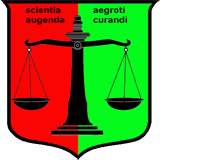EUTwinsS: Twins with SchizophreniaInstitute for Response-Genetics, University of ZurichHead: Prof. Dr. Hans H. Stassen |

|


Partners:
|
Etiology of Major Psychiatric DisordersLittle is known about the etiology of major psychiatric disorders, and a diagnostic differentiation based on biological markers or objective laboratory methods is currently not available. Only incomplete treatments are in use and there is no cure in the majority of cases. Pharmacological treatment, though effective, is unsatisfactory because (1) a large proportion of patients (35% - 45%) exhibit a refractory clinical picture, and (2) treatment response cannot be predicted in the individual patient for currently available antipsychotics and antidepressants. Genetic Predisposition: Vulnerability and ResilienceEvidence from twin, family and adoption studies suggests that, ultimately, genetic markers may represent the most important trait-like characteristics in the etiology of major psychiatric disorders. However, genetic predisposition appears to vary across patients and to "explain" no more than 25% to 60% of the observed phenotypic variance, depending on the onset of illness, severity of illness, and long-term course of clinical syndromes. The Twin Approach to Studying Genetic versus Non-Genetic FactorsLike all complex traits and illnesses, psychiatric disorders are influenced by multiple genes as well as multiple non-genetic factors. The genetic component's magnitude correlates with the severity of underlying syndromes and may vary from 10-70%. There is no single "biogenic imbalance" that causes psychiatric disorders. Rather, the complex interplay between several self-regulating, intrinsic/endogenous subsystems, upon which the organism can "normally" rely, becomes distorted, for whatever reasons. This situation is evident in monozygotic twins who share identical genomes but remain discordant over a lifetime for severe psychiatric disorders, such as schizophrenia. No more than 55% of monozygotic (mz) and 15% of dizygotic (dz) co-twins are concordant for schizophrenia. This raises the intriguing question why mz co-twins who shared the same environment have a 3.7-fold higher risk to both suffer from schizophrenic disorders, compared to dz co-twins raised together.
|
|

For quantitative traits, the within-pair concordances in mz twins lie in the interval [0-1] and are normally distributed, ranging from "extremely discordant" to "perfectly concordant". Mean values can be as high as 0.99 (finger ridge count). For body weight, the mean value is somewhere in the middle at 0.65, thus indicating a major influence of environmental factors. Mean values and variances are strongly correlated: the higher the mean value the smaller the variance [Lykken and Stassen: data of 1,300 dz and 1,434 mz twin pairs]. |
|
| [ Mail to Webmaster ] k454910@ifrg.ch |